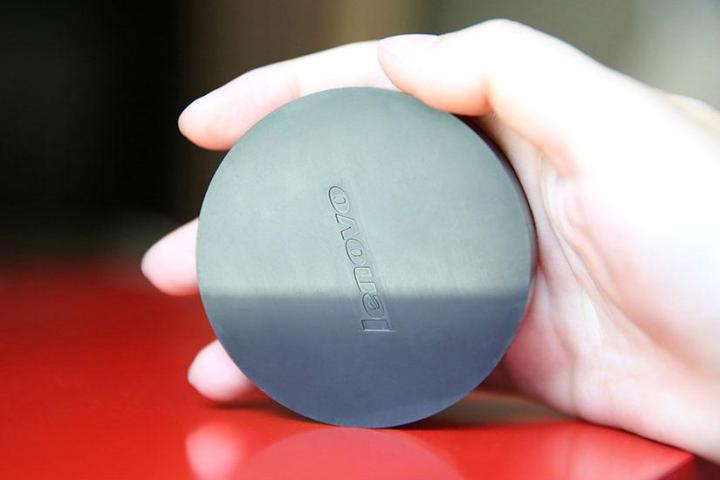
Not only does the device look considerably different from the stick-style design of its competitors, with a more puck-like form reminiscent of Apple TV, but it also boasts quite a few functional differences from Chromecast and associated devices.
Like its competitors, Lenovo Cast connects to your television via HDMI and connects to your Wi-Fi network to allow you to send content from your phone to the larger screen. However, along with using the Google Cast standard for Android and Chrome-enabled devices, it also supports Windows 8.1 and iOS devices through Miracast and DNLA. The Lenovo Cast also operates through both 5GHz Wi-Fi networks and the more common 2.4GHz signal, offering a few more options than its chief competitor.
Lenovo’s media-sharing device is expected to let you broadcast content in most formats up to 65 feet (even through walls), and output 1080p video from its 70mm wide, 15mm high puck-like case.
While its Miracast/DNLA and 5GHz Wi-Fi compatibility make it one of the more versatile options out there, The Lenovo Cast is also priced on the higher-end of the product range. The device will hit shelves with a $49 price tag, making it more expensive than the $35 Chromecast and in the same ballpark as the more capable Roku Streaming Stick and Amazon FireTV stick, both of which offer on-board app support for services like Netflix, Hulu, and Amazon Prime Instant Video.
The Lenovo Cast is expected to hit shelves this August, right around the same time as Lenovo’s upcoming Surface 3 competitor, the ThinkPad 10 tablet.
Of course, with Google’s big I/O event kicking off today, there’s a good chance that an updated Chromecast could be one of the elements in the company’s slate of new offerings, so it might be wise to see how all of the available devices compare when the dust settles.



